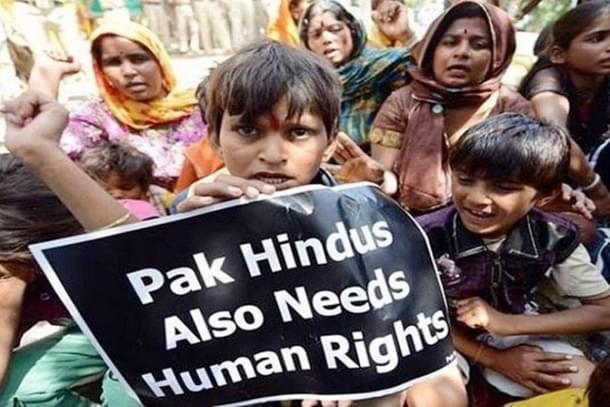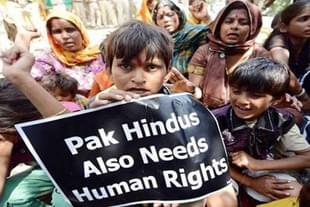Ideas
CAA: The Act Preserving Pluralism, Defending Diversity And Ensuring Equality
Angad Naik
Apr 13, 2024, 03:44 PM | Updated 03:43 PM IST
Save & read from anywhere!
Bookmark stories for easy access on any device or the Swarajya app.


Union Home Minister Amit Shah, on 11 March 2024, officially announced the rules for the Citizenship Amendment Act (CAA), 2019.
The CAA, a key component of Bharatiya Janata Party’s (BJP's) 2019 agenda, was passed by Parliament with a resounding majority. The was followed by scenes of protests, long sit-ins, and violence in the capital. The government blamed Covid for the delay in bringing out rules.
As soon as the CAA was implemented, it emerged as a contentious issue, both domestically and internationally. It stirred debates on the alleged anti-Muslim bias and the constitutional validity of the act.
Amidst the cacophony of ‘propaganda’, it is imperative to delve into the intricacies of the CAA, debunking myths, and historically explaining the humanitarian aspect.
Critics, including prominent international media outlets such as Al Jazeera and BBC, have termed CAA as 'anti-Muslim'. The media opinions also raised concerns regarding the constitutionality of the CAA and its compatibility with secular ethos.
The basic reading of the CAA tells us that the act is only intended to expedite citizenship for persecuted minorities in three neighbouring countries. It is not against any community. It is an act to grant citizenship to the ‘foreigners’ who took refuge in India. It doesn’t concern Muslim citizens of India.
The CAA is based on the ‘principle of inclusion’, where the main basis is religious persecution. This law does not exclude any community. The law is not ‘exclusionary’.
Even a cursory reading of the act clears that no Indian of any religious domination is affected by it. No denomination is being targeted or treated as second-class citizens, as it is being claimed.
The CAA is just meant to provide a fast-track route to citizenship for six minority groups from three neighbouring countries who took refuge in India before the cut-off date of 31 December 2014 due to religious persecution or fear of religious persecution in their home countries.
The existing citizenship provisions of India even allow Muslims of these three countries to apply for citizenship. In 2016 itself, Adnan Sami, the famous Pakistani singer, gave up his Pakistani citizenship and acquired Indian citizenship.
The CAA does not affect the citizenship or any other rights of any Indian. On the contrary, true to the Indian ethos of respecting diversity, the CAA offers a dignified life to refugees who have suffered for decades.
Citizenship rights will not only protect the unique minority’s cultural, linguistic, and social identity but also ensure their economic, commercial, free movement, and property purchase rights.
Critics also questioned CAA’s constitutional foundation and its legality. Article 11 of the Constitution empowers Parliament to legislate on matters of citizenship.
Additionally, Article 246(1) grants Parliament exclusive authority to enact laws related to citizenship, as listed in the Union List of the Seventh Schedule.
Thus, the introduction of the CAA falls squarely within the ambit of Parliament's legislative powers, reaffirming its constitutional legitimacy. Indeed, a meticulous examination of the constitutional framework elucidates the solid legal footing of the CAA.
This is not the first time that Indian state have granted exclusive citizenship. Earlier too, persecuted Indian communities from Sri Lanka (1964-1981), Myanmar (1962), Uganda (1972), and Vietnam (1970s-80s) were granted Indian citizenship. Over the years, as many as 700,000 ex-Indians were granted Indian citizenship.
Another critique says that CAA is against the right to equality. Article 14 guarantees equality before the law. But Article 14 permits reasonable classification in legislation. In this case, ‘religious persecution’ is the reasonable classification adopted.
The same way CAA does not violate Article 15, which pertains solely to Indian citizens and not to foreigners. As the law is aimed at providing a pathway to Indian citizenship for persecuted minorities from neighbouring countries, it does not impinge upon the rights of Indian citizens. Until these migrants attain Indian citizenship, they are not subject to the provisions of Article 15.
Furthermore, the CAA upholds the secular ethos of India by offering refuge to persecuted religious minorities of all faiths from Pakistan, Bangladesh, and Afghanistan.
The detractors also need to understand that the CAA is in perfect harmony with Article 21 of the Indian constitution too, as it guarantees the right to ‘life and liberty’ for refugees. The CAA seeks to offer persecuted minorities a dignified life and liberty through Indian citizenship.
Critics are not only adopting a myopic view of the CAA, but also spreading lies about it. They are not only dismissing the humanitarian objectives behind CAA but are also in denial mode about the humanitarian crises in these three countries of the Indian subcontinent.
The story starts with the pre-independence ‘two-nation theory’ which eventually resulted in the partition of India in 1947. The religious alteration of the population resulted in the creation of the terminology ‘religious minorities’ in the Indian subcontinent. And the first written recognition was the agreement, the Nehru-Liaquat Pact of 1950.
The pact provides a different perspective. This pact between India and Pakistan aimed to safeguard the rights of minorities in both nations. It explicitly recognised the vulnerability of religious minorities and committed to protecting their interests.
The Indian state, with its vibrant democracy, stood by the commitments made. But the Pakistan didn't. The acts or no-acts of Pakistan state resulted in the exploitation, and discrimination of the minorities and marked demographic shift. The CAA is an attempt by the Indian state to address the plight of these persecuted religious minorities who migrated to India.
The persecution of religious minorities in Pakistan, Bangladesh, and Afghanistan has resulted in widespread suffering and displacement, marked by alarming statistics and distressing events. Religious minorities, including Hindus, Sikhs, Buddhists, Jains, Parsis and Christians, have faced systemic persecution and discrimination.
In Pakistan, Sikh and Hindus are assaulted, and forcibly converted. The dwindling population of religious minorities, from 23 per cent in 1947 to 3.7 per cent presently, underscores the systematic marginalisation they face.
Similarly, in Bangladesh, the steady decline in the percentage of Hindus, from 22 per cent in 1951 to 11 per cent in 2011, highlights the persecution and forced exodus of minority communities. In Afghanistan, the once-vibrant Sikh and Hindu communities plummeted from 200,000 before 1992 to a mere 500 by 2018.
These harrowing realities underscore the urgent need for international attention and concerted action to address religious persecution and safeguard the rights of vulnerable minority populations in the region.
The CAA acknowledges the plight of these persecuted communities and extends a helping hand to those seeking refuge in India. Despite criticisms from various quarters, including international media outlets, the CAA stands as a testament to India's commitment to justice, equality, and humanitarianism.
It serves as a beacon of hope for those who have faced persecution and discrimination, offering them a chance at a better life within the borders of India.
With its constitutional legitimacy and humanitarian objectives, the CAA embodies the values of inclusivity, compassion, and justice that are the hallmark of a democratic and pluralistic society.
Angad Naik is a keen watcher of geopolitics and governance around the world. He is based in Delhi.





